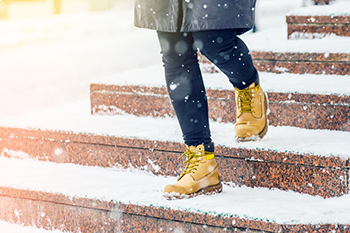
There are several areas that are extremely cold and wet during the winter months. It is important to keep the toes as warm as possible, and this may be difficult to do. One of the first things to do is to purchase boots that are weatherproof. They should also be breathable, which will allow foot perspiration to escape. Additionally, it is helpful to wear boots that are insulated, and many of them are rated for the type of weather they will be worn in. The right socks to wear during these cold months are generally made from fleece, wool, and similar fabrics. Many people are used to wearing cotton socks, which may not be a good choice, as they can make the feet feel colder. In areas of intense cold, a snow gaiter may be worn. This is wrapped around the lower leg, and can help to prevent the snow from entering the boot. It is crucial to keep the feet dry, because they will have a better chance of staying warm, possibly preventing unwanted foot conditions from developing. If you would like to know more about proper foot care in winter months, it is suggested that you speak with a chiropodist who can provide you with useful information.
The winter months can bring about new or worsening foot and ankle problems. If you’re suffering from foot or ankle pain, please consult with Chiropodist Stephanie Poupore from North Bay Foot & Ankle. Our clinician can help you maintain the health of your lower limbs and your mobility.
Winter Foot Problems
Cracked heels - Dry, cracked skin on the heels of the feet that is associated with cold, dry weather
Athlete’s foot - A fungal infection on the skin of the feet
Blisters - Fluid-filled bubbles of skin that usually form in response to friction
Fractures - Broken bones in the feet or ankles
Metatarsalgia - General foot pain
Chilblains - Spasming of the small blood vessels in the toes in response to exposure to cold weather
Raynaud’s disease - Numbness, pain, and color changes in the toes due to cold weather
Prevention
Wear warm socks and shoes
Avoid prolonged exposure to the cold
Moisturize the heels regularly
Keep your feet clean and dry
Walk carefully in areas that may be icy
Wear non-slip shoes
If you have any questions, please feel free to contact our office located in . We offer the newest diagnostic and treatment technologies for all your foot care needs.
